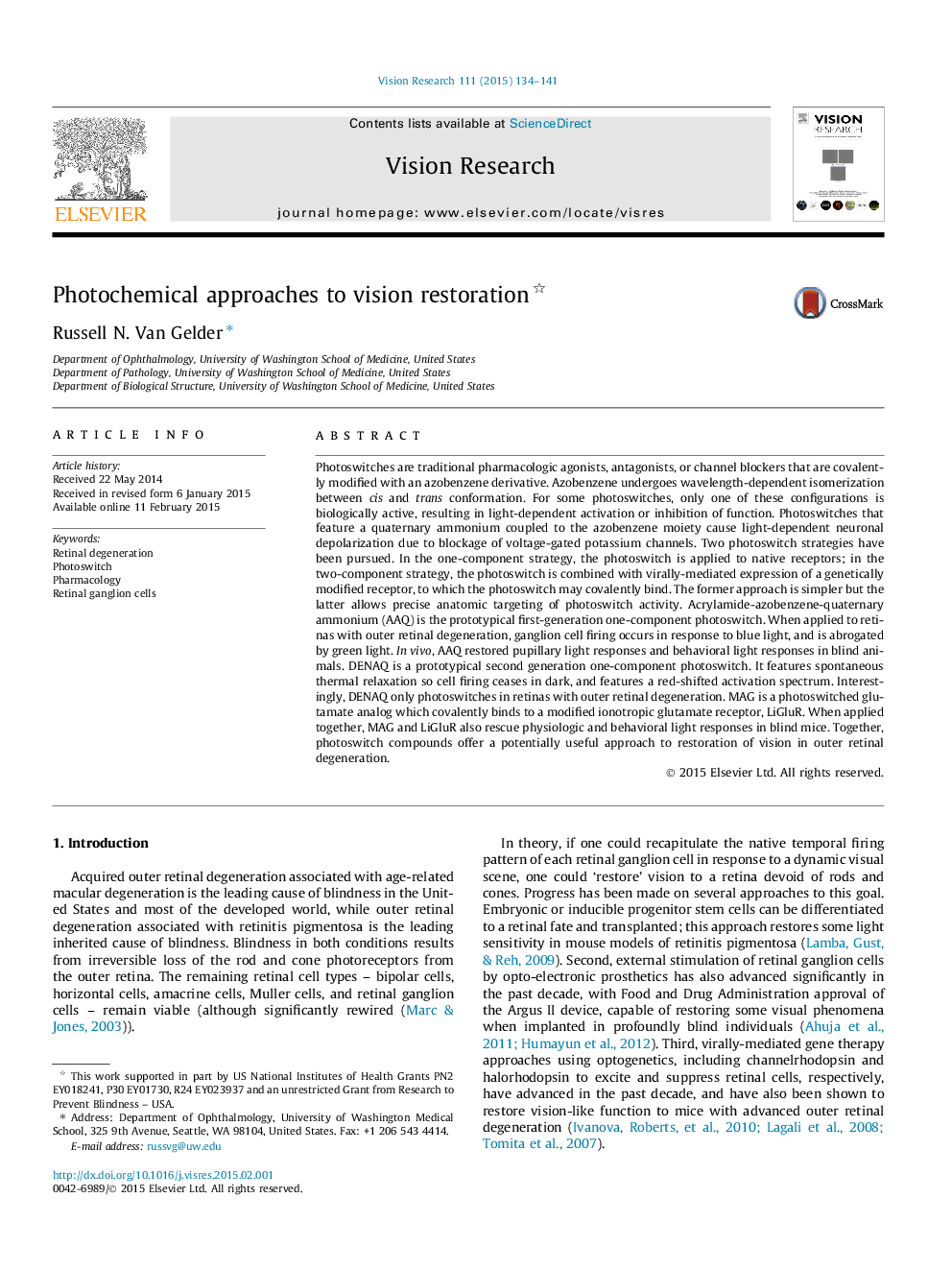| کد مقاله | کد نشریه | سال انتشار | مقاله انگلیسی | نسخه تمام متن |
|---|---|---|---|---|
| 6203159 | 1263361 | 2015 | 8 صفحه PDF | دانلود رایگان |

- Photoswitch compounds use azobenzene moieties to confer light activation.
- Photoswitched voltage-gated K+ channels confer light-activated cell firing to neurons.
- Photoswitches can confer light-dependent retinal ganglion cell firing to blind retinas.
- Two component photoswitches offer the possibility of targeted activity in the retina.
- These molecules offer an additional approach to vision restoration.
Photoswitches are traditional pharmacologic agonists, antagonists, or channel blockers that are covalently modified with an azobenzene derivative. Azobenzene undergoes wavelength-dependent isomerization between cis and trans conformation. For some photoswitches, only one of these configurations is biologically active, resulting in light-dependent activation or inhibition of function. Photoswitches that feature a quaternary ammonium coupled to the azobenzene moiety cause light-dependent neuronal depolarization due to blockage of voltage-gated potassium channels. Two photoswitch strategies have been pursued. In the one-component strategy, the photoswitch is applied to native receptors; in the two-component strategy, the photoswitch is combined with virally-mediated expression of a genetically modified receptor, to which the photoswitch may covalently bind. The former approach is simpler but the latter allows precise anatomic targeting of photoswitch activity. Acrylamide-azobenzene-quaternary ammonium (AAQ) is the prototypical first-generation one-component photoswitch. When applied to retinas with outer retinal degeneration, ganglion cell firing occurs in response to blue light, and is abrogated by green light. In vivo, AAQ restored pupillary light responses and behavioral light responses in blind animals. DENAQ is a prototypical second generation one-component photoswitch. It features spontaneous thermal relaxation so cell firing ceases in dark, and features a red-shifted activation spectrum. Interestingly, DENAQ only photoswitches in retinas with outer retinal degeneration. MAG is a photoswitched glutamate analog which covalently binds to a modified ionotropic glutamate receptor, LiGluR. When applied together, MAG and LiGluR also rescue physiologic and behavioral light responses in blind mice. Together, photoswitch compounds offer a potentially useful approach to restoration of vision in outer retinal degeneration.
Journal: Vision Research - Volume 111, Part B, June 2015, Pages 134-141